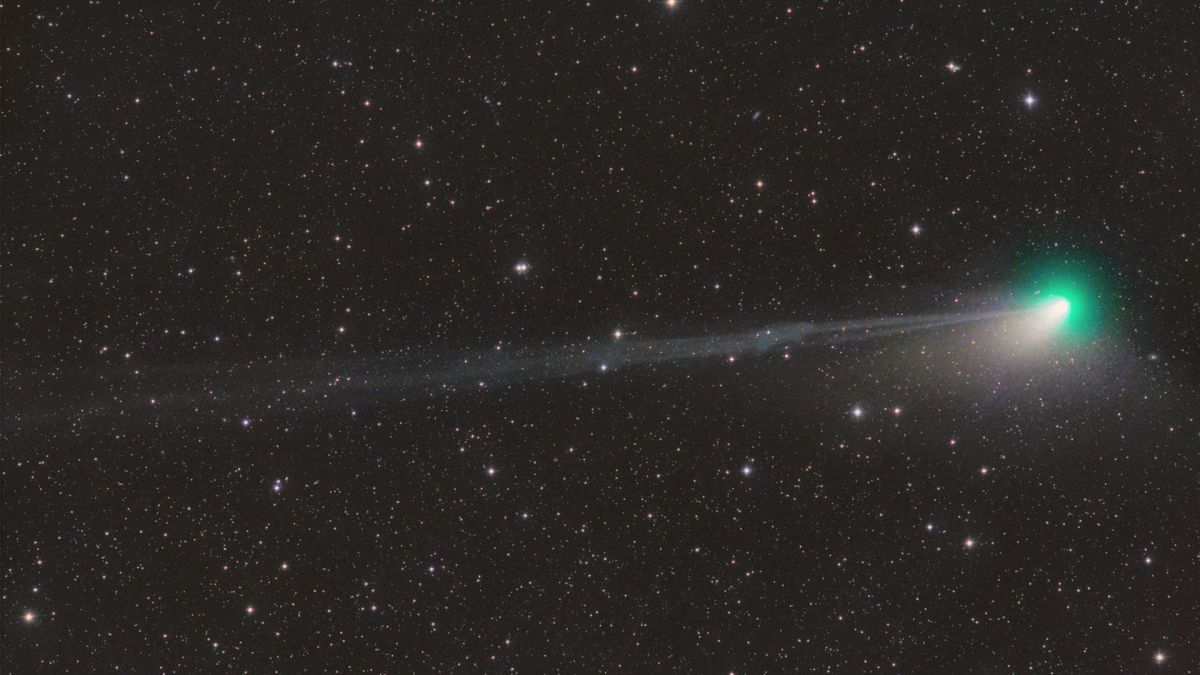
www.space.com
Brilliant green comet loses part of its tail to solar storm in this stunning astrophotographer photo
An image taken by an Austrian comet hunter reveals a disconnection in Comet's C/2022 E3 (ZTF) tail that may have been caused by turbulent space weather.
Science & Tech
An image taken by an Austrian comet hunter reveals a disconnection in a stunning green comet's tail that may have been caused by turbulent space weather.
Seasoned astrophotographer Michael Jäger took this image of the Comet C/2022 E3 (ZTF) on Tuesday (Jan. 17) after driving 500 miles (800 kilometers) from Austria to Bavaria in Germany to get a clear view of the night sky. Jäger shared the image on Twitter (opens in new tab), along with more photos video of the comet.
"The journey was not in vain," Jäger told Space.com in an email. He added that when it comes to capturing images of comets, an astrophotographer can waste no time as these icy balls change rapidly when they reach the warmer regions in the inner solar system.
This particular image reveals what astronomers call a disconnection event, essentially a weakening in the comet's signature tail, which makes it look as if the tail was breaking off.
According to SpaceWeather.com (opens in new tab), this disruption in the tail is likely caused by turbulent space weather, namely the stronger-than-usual solar wind that has been released during a recent coronal mass ejection (CME). CMEs are bursts of highly energetic particles from the sun's upper atmosphere, the corona, that travel across the solar system, interfering with the atmospheres of planets and other bodies.
"A piece of Comet ZTF's tail has been pinched off and is being carried away by the solar wind," SpaceWeather.com wrote. "CMEs hitting comets can cause magnetic reconnection in comet tails, sometimes ripping them off entirely."
A comet's tail is made of vaporized material and dust released by the icy body as it heats up closer to the sun. While the comet itself is usually no more than a few miles wide, the tail can stretch for hundreds of thousands of miles across the inner solar system, providing the unusual celestial spectacle that gets astronomers and astrophotographers buzzing.
SpaceWeather.com (opens in new tab) added that multiple CMEs have swept past Comet ZTF this month as its visit to our region of the solar system coincides with a surge in the activity on the sun's surface. Currently, there are eight numbered sunspots traversing the sun's Earth-facing disk, according to the U.K. space weather forecaster Met Office (opens in new tab), so more CMEs can occur as the comet comes closer to us. Sunspots are darker, cooler regions visible on the surface of the sun that feature twisted and dense magnetic fields, which give rise to solar flares and CMEs.
























































